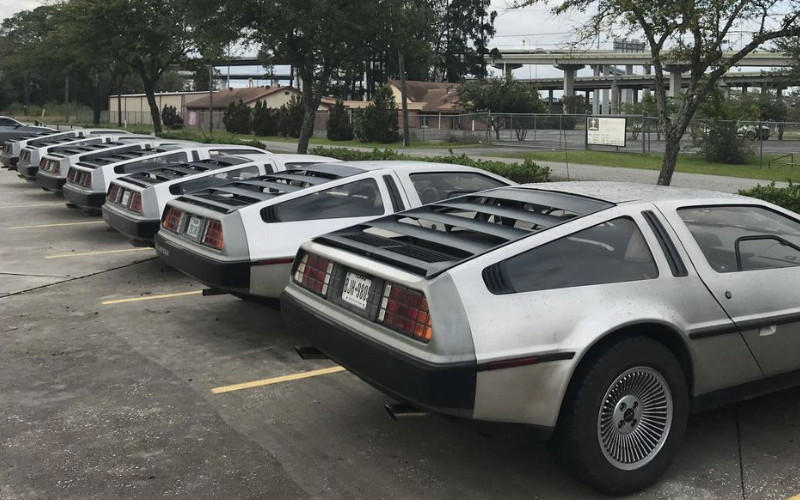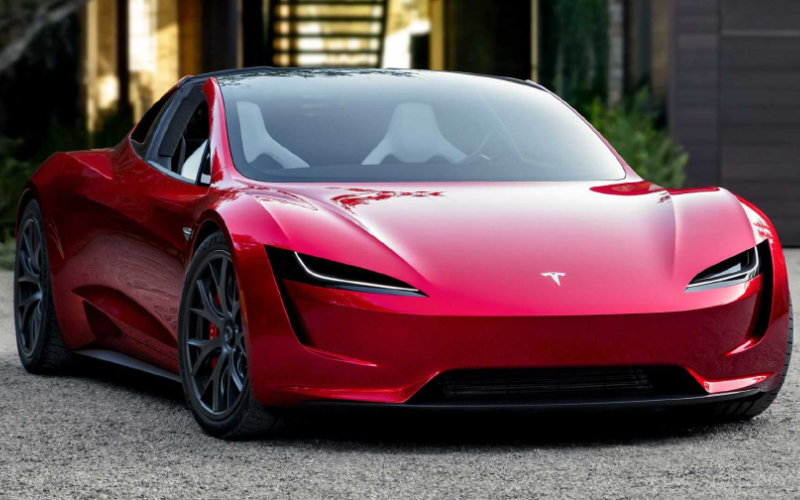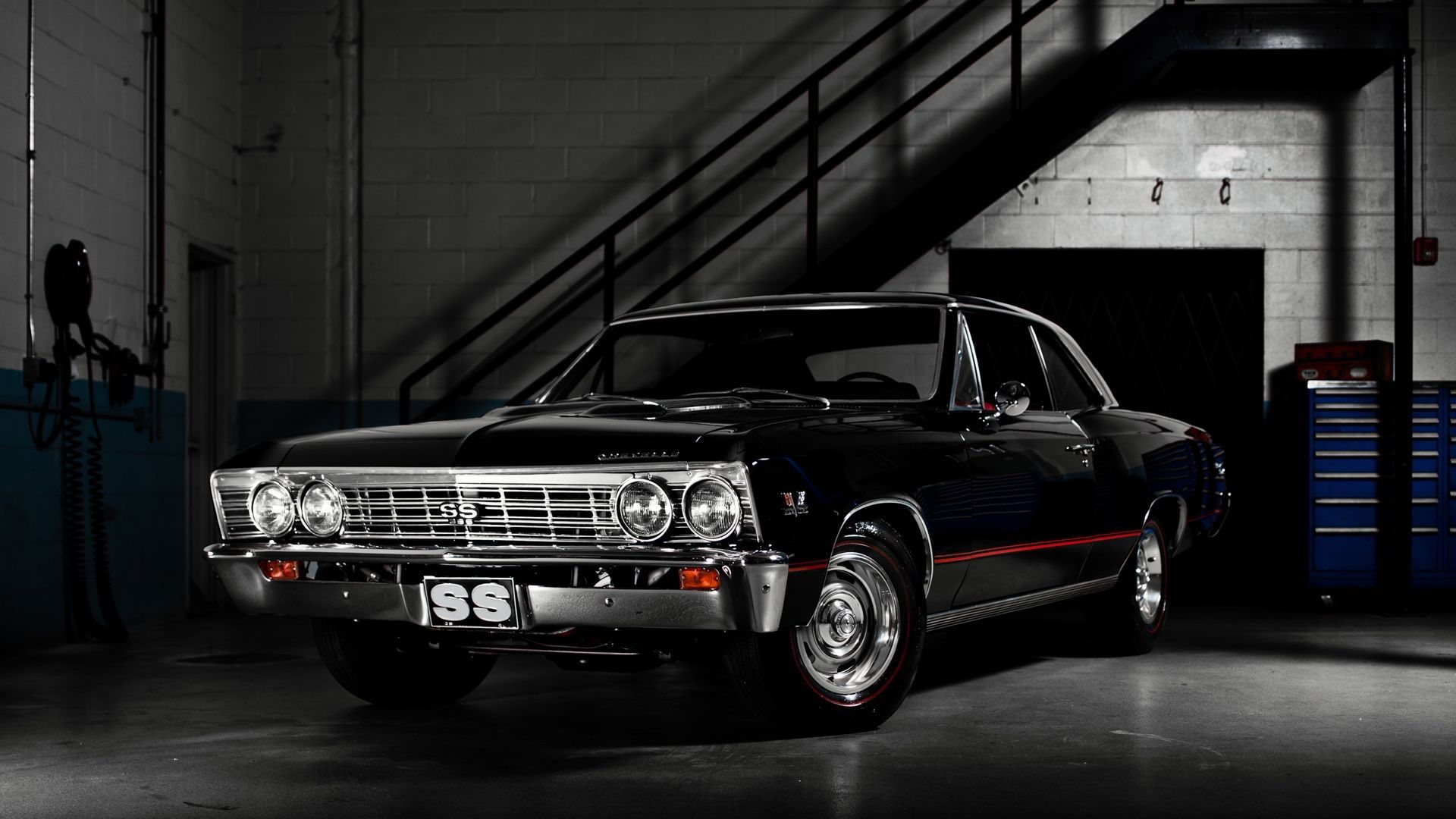The car industry has now been around for well over a century. The oldest automotive company that is still in existence technically is French giant Peugeot, which was founded in 1810. Obviously, back then they weren’t rolling out the Peugeot 2008 crossover SUV. They were actually a coffee mill, breaking in to bicycles by 1830, and then coffee grinders in 1842. Their first cars were produced in 1882, with their first production model made in 1889.
Other companies were emerging in those early days, including Mercedes-Benz (1883), Skoda (1895), Land Rover (1896), Renault (1899), Fiat (1899), and Cadillac (1901). Over the years others would come, too, and create one of the biggest, most significant and economically culturally and environmentally impacting industries ever known — the automotive sector.
Automotive Flops
Car companies with roots in the earliest days of the automotive industry love to look back on their heritage and their role in creating the global industry as it is today. In short, they love to tell their story. In today’s blog, however, we are not focusing on their past glories, but rather the parts of their past that they’d rather we kept quiet and didn’t talk about. We’re talking about the biggest historical automotive flops.
To be clear, we are defining flop here as either a car model or a decision/policy that bears some of the following characteristics, among possible others:
- Drew extreme negative attention from the public
- Resulted in dismal unit sales
- Caused the company to go bankrupt or be bailed out
- Was the subject of comical parodies, jokes or satire over a protracted period
- Created huge safety concerns and a massive subsequent recall
- Led to accidents and/or fatalities of drivers, passengers or others
We will look at stories not just from the US but from around the world. The automotive industry has been one of the first to become truly globalized. You only have to look at the ownership and corporate structures of some of the best-known car brands to know that hardly any legacy automotive company is truly American, British, German or of any other one country. It’s therefore fitting to look at examples from around the world.
New Car Flops
In this first section, we’ll look at model releases that may have been touted as revolutionary or incredible new ideas from auto makers, but eventually turned into the proverbial albatross around their neck.
The Yugo (1985-1992)
The Yugo was first created back in 1980 in the car’s native home of Yugoslavia. It was also marketed there as the Zastava Koral. In markets outside the US, the Koral as it was more widely known was built, sold, facelifted, remarketed and sold again all the way up until 2008. Unfortunately, the car’s fortunes within the United States were not as long-lived.
The man behind bringing the Yugo to the United States market was Malcolm Bricklin, a man now well-known both for his unique successes and failures in business. The Yugo was certainly one of the latter. In 1985, Bricklin brought the car to the US, marketing it as a miracle budget car. He bought them wholesale at about $2,000 each, and sold them to consumers in 1985 at just $3990.
The 3-door car hatchback may have been a communist-made car being sold in the then highly anti-communist America of Ronald Reagan, but in the beginning sales were excellent. The low price clearly appealed to America’s market-conscious consumer. In the seven-year period that Bricklin was selling the car in the US, he successfully sold almost 142,000 units. His best single year was 1987, where he sold an impressive 48,812 units.
By the 1990s, however, Bricklin hit a snag. In his final year of selling in 1992, he only sold 1,412 units. What happened in the space of those seven years? Well, apart from the car being hideously ugly, there were a growing number of questions over its reliability. It was based on old fiat technology and was built using an interference engine design. This meant that if an owner didn’t replace the timing belt every 40,000 miles or so, the engine could risk serious damage, even being damaged beyond repair.
Beyond the mechanical problems, the car was constantly derided as “worst car of the millennium” and it even made it into TIME magazine’s “50 Worst car of All Time” list.
The DeLorean DMC-12 (1981-1983)
The DeLorean DMC was a car built on huge aspirations. Specifically, it was built on the aspirations of one John Z. DeLorean, who wanted to create what he believed would be the sports car of the future. He spent much of the 1970s promoting that idea and convincing the British government to give him grants in return for building his all-new DeLorean factory in a very troubled and war-damaged Belfast, Northern Ireland.
He may have come across as something of an eccentric to some, but DeLorean had solid credentials backing his attempts to get some $120 million in grants from the UK. He had previously worked for General Motors, and was the brains behind a slew of vehicles already such as the Pontiac GTO, Pontiac Firebird, Chevrolet Cosworth Vega and other. It wasn’t out of this world then that he knew a thing or two about car design, development and production.
What happened with the DeLorean, then? How can it have been such a flop if people today romanticize the car so much because of its inclusion in such cult classics as the “Back to the Future” movies. With its unique shape, vertically opening wing doors, powerful 2.85L V6 engine and more, it seemed like DeLorean could have been onto something. The 1970s and 1980s were exciting times, with space exploration triumphs in recent memory and the realms of science fiction such as Star Wars pushing the boundaries of the imagination further than ever, so a car like the DeLorean must have fit in, right?
In fact, no. The car was a disaster from quite early in the project. The factory opened and production started in 1981, only to be abruptly halted in late 1982 as models for the 1983 model year were being produced. In October of 1982, John DeLorean himself was arrested for drug trafficking. The British government seized the company’s assets and shut down the factory not long after. In the whole two years of production and sale, the DeLorean DMC only sold 6,000 units of about the 9,000 produced. DeLorean’s target had been 12,000 models sold each year.
Plagued by accusations of poor build quality and mechanical issues, the first models off the production lines needed about 200 extra hours of labor in quality assurance before being shipped. The front suspension was also a constant thorn in the company’s side, as well as the clutch pedal, brakes, and driver instruments like the speedometer not working properly. Even the “futuristic” doors didn’t work as they should.
General Motor EV1 (1997-1999)
After all we have seen in the 21st century, it seems a little odd to think that for many years GM was at the forefront of EV technology, releasing an all-electric car even as Toyota was just about managing to start with the Prius hybrid model. The EV1 was the first production model, with a range of 90 miles (not bad for the time) and the ability to fully charge in just 3 hours.
This doesn’t sound like much of a flop. It actually sounds rather ahead of its time, doesn’t it? The case of the GM EV1 is rather unusual, because it’s a car that was scrapped in spite of the fact that there was apparently huge demand from customers. When they launched their pilot program with 50 test vehicles, there were 25,000 volunteers. That’s not a flop, it’s a rave!
By the end of the 1990s, as the Toyota Prius and Honda Insight were arriving in the US market, GM had produced about 1,100 units of the EV1. Even though there were still people who wanted the car, GM simply decided to shut down the project, even going so far as to confiscate and crush the remaining models. There was such a backlash from expectant EV1 drivers and others, that it even sparked a documentary called “Who Killed the Electric Car?”
That was the flop when it comes to the EV1. GM handled the entire affair abysmally. Even as fuel prices were rising, they took their viable alternative to gasoline cars and set it alight. They wouldn’t produce their own independently made all-electric car again until 2017 and the release of the Chevy Bolt.
Edsel (1958-1960)
If anyone thinks that it was Toyota that invented offshoot high-end brands when they came up with Lexus, they are mistaken. The American “big boys” were at it already in the 1950s. GM released Oldsmobile; Chrysler released DeSoto; and even Ford had Lincoln and Mercury. Competition between these offshoot brands was fierce, and after Ford became a publicly traded company in 1956, the new board members regarded Lincoln as something of a failing brand. It was slipping behind, so the company needed to take action.
The action that they took was the creation of a new brand, Edsel. The plowed millions of dollars to place it as a more up-market alternative to Mercury that would support Lincoln. They even decided to promote it through the relatively new method of advertising at the time, television, arranging for an expensive CBS timeslot on September 4, 1957 for the launch, which they called “E Day.” Here’s the show:
E-Day was a star-studded event featuring “The Edsel Show,” which was attended by the likes of Bing Crosby, Frank Sinatra, Louis Armstrong and many others. They even got an Emmy for it! The show sang the praises of this new brand and promised many wonderful things. Models made under the Edsel name included the Citation, Corsair, Pacer and Ranger in the full-size collection, and the Bermuda, Villager and Roundup in the station-wagon section. To say the cars were “unsuccessful” is a massive understatement.
After investing some $350 million into the project, the losses at the time were around $250 million, which in today money translates to a sometimes company-ending $2.16 billion. The launch was televised in 1957, and the Edsel brand dropped in 1959, having sold a measly 120,000 units among all those models. Dark days for Ford.
Rolls-Royce Camargue (1975-1986)
Automotive flops are not the unique wheelhouse of the affordable car brand. Even the top-end elite luxury brands get it wrong from time to time. This was beautifully demonstrated in 1975 upon the release of the Rolls-Royce Camargue. The origins of the Camargue are all too familiar to companies that have experienced flops before: they were trying to update a “tired” older image.
Rolls-Royce is one of the oldest car companies in the world. They built their reputation on prestigious luxury models that were adored by Britain’s upper classes and fellow elites around the world. To make their new project more successful, they thought, it was decided that it would be done in partnership with Italian design firm and coachbuilder, Pininfarina. The result of their work was the Camargue.
The Camargue was among the first Rolls-Royce models not designed in-house. It was a harsh lesson for Rolls-Royce to perhaps stick to what they know which is the “old-fashioned” luxury and prestige that they were famous for before. After 11 years in production, and having had its price inflated to make it more appealing to the jet set who clung to “you get what you pay for” as their winning mantra, the car was dropped after just 531 sales. Even for a Rolls-Royce that is bad.
In the years that followed, despite some high-profile defenders like noted BBC automotive journalist James May, the car was continuously derided and put down, especially for its design. It was named in several lists of ugliest cars, including one for The Daily Telegraph newspaper in 2008 where it ranked 92 out of 100; another in 2010 “10 Worst Cars” chosen by readers of Canada’s The Globe and Mail newspaper; and also, at position 38 of 50 in the 2005 book Crap Cars. The author of that book, Richard Porter, said of the Camargue, “[it] looked utterly terrible.”
Oldsmobile Aurora (1995-2000)
We mentioned the name Oldsmobile further above when we were discussing the offshoot Edsel brand from Ford. Oldsmobile was a brand owned by GM, and though Oldsmobile had lasted longer than Ford’s ill-fated Edsel brand, by the mid-1990s it was also struggling. Up to that point, most of their models were just rebadged Chevrolets and Pontiac cars. Instead of just quietly dropping the brand, as Ford did with Edsel, GM decided to make a stand and fight for the life of Oldsmobile with a new model, the Aurora.
The Aurora would either make or break Oldsmobile. The design may look very pedestrian by modern standards, but the car came with some pretty great-sounding features like a 4.0L V8 Engine. In its later years, they also expanded the engine range to include a V6 option. The first generation was launched for the 1995 model year where 45,677 units were made. The only year to surpass those production numbers was 2001.
In the early years, the Aurora looked like it might do well. The first year’s production was strong, and the car was backed by an expensive marketing campaign. On top of that, by 1997, the car was chosen to be the official pace car of the Indianapolis 500. It did that from 1997 to 2000. They even got Indy 500 legend Johnny Rutherford to drive it.
So, what went wrong for the Aurora? The year 2001 saw a bigger production year because it was the year that the company launched its second-generation redesign of the model. The remodel did not go down well, and a car that was already pretty pedestrian became even more so. What really killed the appeal of the Aurora was the fact that GM apparently had no belief in the brand anymore. In December of 2000, the company had already announced plans to phase out the Oldsmobile brand.
That’s hardly a message to inspire confidence in customers to rush out and buy an Aurora, is it? Would you be running out the door to purchase a new product if the company that made it had said that they no longer thought it had legs and were dropping it? Unlikely. The Aurora, and ultimately Oldsmobile, died a rather undignified death. It was another nail in the heavily nailed coffin of GM at the time.
Recalls and Dangerous Releases
In this second section, we’ll look at cars that were either the subject of major recalls or the cause of huge public safety concerns. These weren’t just necessarily bad sellers, but badly made cars that never should have seen the light of day.
Ford Pinto
Though there have been many recalls on individual car models, it is hard to imagine one more infamous than the Ford Pinto (aka the Mercury Bobcat). The Pinto was manufactured in North America from 1970 to 1980 for the mode years 1971 to 1980. At the time it was touted as an affordable subcompact in three forms: sedan, station wagon and hatchback.
The Pinto was the brainchild of the then Ford President Lee Iacocca who envisioned a subcompact model that weighed under 2,000lbs and could be priced at under $2,000. That price in modern terms would be just under $14,000, so it’s remarkably cheap. The project was quickly developed and released, and the Pinto had 3 million units produced in its entire production run. Even Henry Ford II (Chairman from 1945 to 1960) bought one as one his personal daily runaround cars.
The main flaw behind the infamous reputation that soon emerged with the Pinto was located in the gas tank. Even just hearing that much would be enough to set a lot of people on edge, right? The media and the government got wind of a design flaw that saw the Pinto’s gas tank rupturing after rear-end collisions. The gas tank had been placed close to the rear bumper, making it vulnerable even in fairly low-speed fender bender situations. After much negative media attention and government scrutiny, as well as pressure from the NHTSA, Ford finally withdrew the Pinto and recalled models over the flaw.
There were apparently six fatalities in Pinto fires that resulted from a rear impact of the vehicle by another. That’s obviously a terrible thing, but considering there were 2.2 million of them on the roads at the time, it is perhaps enough to make one wonder about how serious the problem really was. That is still the subject of great debate among legal scholars, but the damage to Ford’s reputation had already been done.
Chevrolet Series-C Copper Cooled (1923)
This item in our list proves that we’re not just going after the modern-age flops, but the classic ones, too. The early days of cars were fast-paced and exciting. Before 1923, Henry Ford had been making waves not only with his Model T, but also the manner in which it was mass-produced in that ingenious way Ford espoused. Chevrolet was trying to play catch up, and the chief engineer of Delco who was working with them, Charles Kettering, had big plans.
Kettering had an engine design that was simple and if viable would be affordable, too. It was an overhead-value air-cooled inline-4 model that employed copper cooling fins. The fins were the real key to success here, according to Keating. The engine was extensively tested at GM, but unfortunately proved unable to pass. At the same time, however, Chevrolet wanted to get the car out to compete with Ford’s ever-growing success.
The Series-C was therefore rushed to production even in the full knowledge that engine was unable to pass GM’s many quality and viability tests. The results were nothing short of a catastrophe for the company. Fortunately, no casualties or fatalities were reported, but the cars were nonetheless deadly. The engines would overheat even at low speeds. The best-case scenario was catastrophic engine failure and breakdown, the worst-case was fire.
After building just 759 of these machines, GM scrapped the project and tried to sweep it under the rug. They destroyed the 259 model not yet sold, recalled all the others but two (which survive as museum pieces today) and crushed them. They moved on to a more conventional water-cooled design, which fared much better.
Takata Airbags (Honda and Other Brands)
Though there have been many brand-wide recalls in the past such as Ford’s infamous 1981 recall that brought back some 21 million vehicles, and Toyota in 2009-2010 where they recalled 9 million vehicles, our final entry is not going to cover these. The final entry in our list of deadly flops comes from an auto parts company, Takata Airbags.
Takata has a long history of airbag production going all the way back to 1988. By 2014 which is when the main part of the recall scandal began, they were apparently operating with a 20-percent global market share. Despite things starting to come to light in 2013, there were reports that models as early as 1998 Hondas were affected by faulty airbags. In the worst cases, there were reports of airbags exploding and releasing deadly shrapnel. Honda has reported that they knew of 100 injuries and 13 deaths in the US and Malaysia all related to Takata airbags.
Other models affected by the airbag recall included 2001-2003 Honda and Acura models, the 2006 Ford Ranger, and the Mazda B-Series. These were named by the NHTSA as the most high-risk vehicles in which the Takata airbags could potentially injure or kill drivers or passengers. The NHTSA also included in their overview that an approximate total of 67 million Takata airbags were recalled. The fault was traced to a Mexican subsidiary factory, the Monclova Plant in Coahuila.
Besides endangering all those drivers and passengers, the scandal proved too much for the company to bear. In 2017, Takata filed for Chapter 11 bankruptcy in the US, and also in Japan. The amount they were owing in compensation was more money than the company even had.
Conclusion: It Happens to the Best of Them
Automotive flops are an interesting part of the industry’s history. It’s clear why car companies would want us to forget about these major follies as fast as possible, but it’s important that nobody does. First of all, it helps us to remember that no matter how giant, megalithic and faceless these automotive corporations become, the people making the decisions are still at the end of the day just regular flawed people. Only such beings could make some of the decisions that we have seen them make in the past century or so. That is unlikely to change.
Second, and perhaps most importantly, it’s crucial that we remember when things went wrong so that we can form a complete picture of an automotive brand. Only with a complete picture can we go on to either trust or mistrust a marque, and thus hold the makers to account. It is accountability that has driven the kinds of innovation in safety and quality control that we see and enjoy today. It’s right that companies should feel a sense of shame for past mistakes.
The value of every automotive flop is that it brings harsh lessons to automakers that guide them to more successful, safer and more enjoyable vehicle models that we the consumer get to enjoy.



